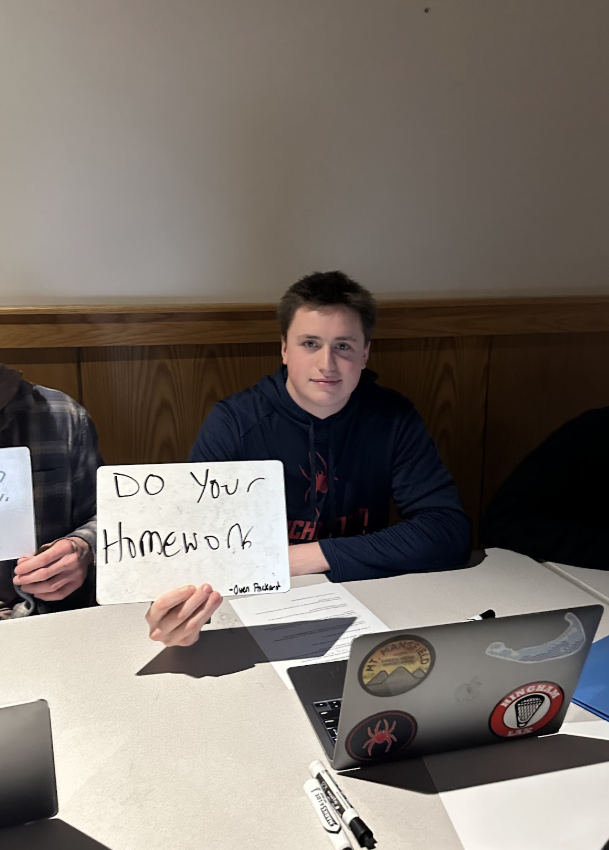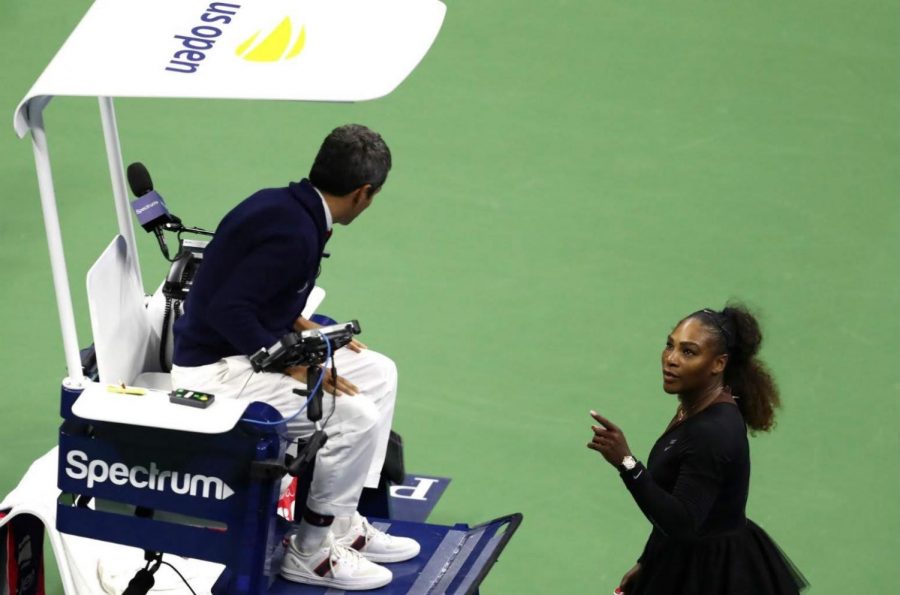Serena Williams Goes Head-to-Head With “Sexism” in Tennis
Serena Williams confronts umpire Carlos Ramos for making what she claims to be “sexist” calls. Photo via Billboard
September 22, 2018
On Saturday, September 1, a major scandal swept the U.S. Open Tennis Tournament and the United States Tennis Association by storm after a series of calls made by a referee led Serena Williams to accuse him of applying different standards of issuing code violations for men and women. This controversy shed light on the problem of sexism in tennis just a week after French player Alizé Cornet received a code violation for adjusting her top mid-game, initiating the debate in the sport.
Serena Williams was set to play Naomi Osaka of Japan in the U.S. Open finals on Saturday, September 1. In qualifying for this spot in the championships, the 36-year-old tennis star battled her younger sister and longtime doubles partner Venus Williams, gaining a victory that allowed her to advance to play in the women’s final.
Williams’ seeding placed her at favorable odds for winning against Osaka, yet Williams quickly fell behind. Mid-game, the umpire, Carlos Ramos, called a code violation on Williams, as he believed that Williams’ coach was “coaching” her from the sidelines by making hand gestures that implied strategies to gain the point.
Frustrated by the umpire’s call and his refusal to revoke it, Williams smashed her racket on the ground, resulting in another code violation. After the issue of the second code violation, Williams’ approached the umpire, claiming that “I have never cheated in my life” and “You owe me an apology.” She also called the referee a “thief” and a “liar” after he took a point away from her score. She also commented on the actions taken against men as opposed to women in the sport, calling the umpire out on being sexist when issuing violations. Following Williams’ confrontation of the umpire, Ramos issued a third code violation, this time for the verbal abuse of an official.
Williams proceeded to play the match following this last violation, losing 6-2 to her opponent Osaka, making Osaka the first Japanese female to ever win the U.S. Open. However, after the events that took place during the match, the final result of the game was far from happy for all those involved.
Standing on the podium at the end of the match, both Williams and Osaka were in tears due to the events that interfered with the match. When Williams was interviewed, she congratulated her opponent, but also made comments explaining that she would try to move forward from the events.
Despite Williams’ suggestion of moving forward, many tennis players began to share their personal experiences with sexism in the sport, initiating a debate over gender-based protocols in tennis. Junior Claire Schnorr took the stance that “the ref should not have called the last violation. Even though he saw it as verbal abuse, she was calling him out for being sexist, and if he wanted to refrain from accusations of sexism, he shouldn’t have called verbal abuse.”
This backlash partially responded to the actions of an umpire from just a few days earlier. Before the U.S. Open finals, Alizé Cornet of France was issued a code violation for adjusting her shirt mid-match. She claimed to be only fixing her shirt because it was on backwards and it was humid, but she was not excused from these violations.
This was not the first time Serena Williams was given for code violations that sparked sexism debates, however. In late August, Williams wore a Nike catsuit for her match that was designed to support her body after going through childbirth last June. Williams received a code violation for her outfit being inappropriate.
In the aftermath of the recent incidents, Serena Williams denied that her coach, Patrick Mouratoglou, made any signals that implied coaching her from the sidelines, which gained her her first code violation. However, Mouratoglou stated otherwise, admitting to making a few coaching gestures that were deserving of a code violation, yet he believes that she did not look at him from the sidelines, explaining why she was surprised by hearing of the violation. Both Mouratoglou and Williams share the belief that the referee’s calls were too extreme for the situation. Junior Schuyler Bordeau, a tennis captain at Hingham High, expressed that “the ref made the right call on the coach cheating and on the broken racket. Even though it was perceived as sexist, the calls were right.”
As tennis players and fans have sided both with Ramos and Williams, the question of the extent to which sexism is a factor in referees’ calls remains unclear. Whether or not Williams was in the wrong, these events further contribute to the debate regarding the differences between how women are treated in the workplace as opposed to men, forcing the U.S. Tennis Association to adjust regulations and address the issues on a public scale in future matches.

































